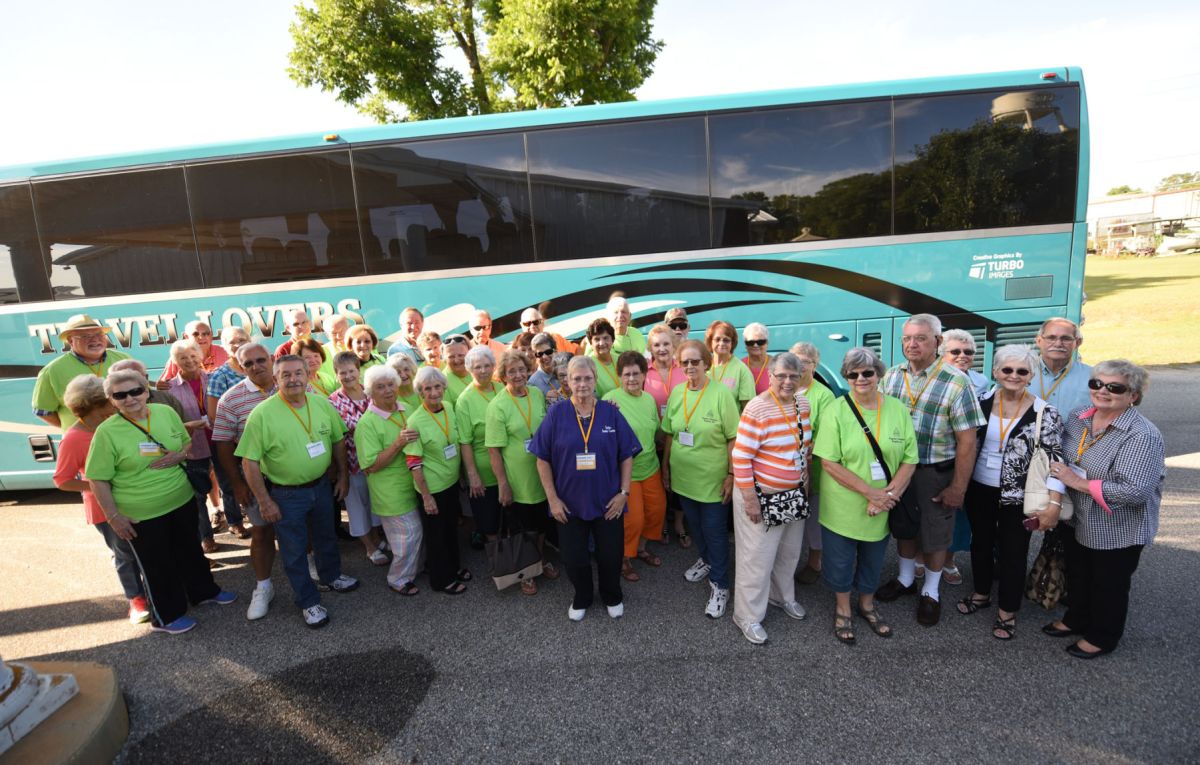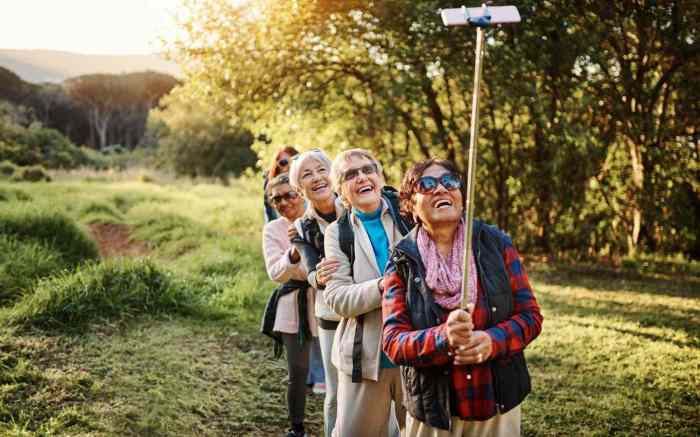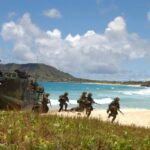Senior Citizens Travel Groups are experiencing a surge in popularity, offering retirees exciting opportunities for adventure, relaxation, and cultural immersion. This burgeoning market caters to diverse preferences, from leisurely cruises to exhilarating safaris, each promising unique experiences and tailored itineraries. Understanding the various group types, planning considerations, and associated costs is crucial for both organizers and prospective travelers seeking a fulfilling and safe journey.
This guide delves into the intricacies of senior citizen travel groups, examining the different types available, providing practical planning advice, addressing health and safety concerns, and exploring effective marketing strategies. We’ll analyze cost management techniques, showcase inspiring testimonials, and present detailed sample itineraries to illustrate the diverse possibilities for enriching retirement travel.
Types of Senior Citizen Travel Groups

The senior travel market is booming, with diverse options catering to a wide range of interests and budgets. Understanding the different types of senior citizen travel groups available is crucial for selecting the perfect experience. This analysis examines the key characteristics of various group travel models, highlighting their advantages and disadvantages to aid in informed decision-making.
Adventure Travel Groups for Seniors
Adventure travel for seniors is designed to offer stimulating experiences while prioritizing safety and comfort. It typically involves moderately challenging activities like hiking, wildlife viewing, and exploring less-traveled destinations. These trips often incorporate elements of cultural immersion, allowing participants to connect with local communities and traditions. However, physical limitations should be considered; some adventures may not be suitable for all seniors.
A key advantage is the opportunity to experience new thrills and challenges, while a potential drawback could be the higher level of physical exertion compared to other travel styles.
Relaxation and Wellness-Focused Senior Travel Groups
These groups emphasize rest, rejuvenation, and well-being. Itineraries often feature spa treatments, yoga sessions, leisurely sightseeing, and time for personal relaxation. Destinations are usually chosen for their serene atmosphere, such as beach resorts, tranquil countryside locations, or wellness retreats. The advantage is the opportunity to unwind and de-stress, while a potential disadvantage could be a lack of stimulating activities for those seeking more adventure.
These trips are ideal for seniors prioritizing tranquility and self-care.
Cultural and Historical Senior Travel Groups
These tours focus on exploring the history, art, and culture of specific regions or countries. Activities might include visiting museums, historical sites, attending cultural performances, and engaging with local artisans. These trips offer enriching educational experiences, promoting intellectual stimulation and a deeper understanding of different cultures. A key advantage is the opportunity for significant personal growth and learning, while a potential disadvantage is the heavy focus on sightseeing, which may be tiring for some seniors.
Destinations are often chosen for their rich historical and cultural significance.
Cruise-Based Senior Travel Groups
Cruise-based travel offers a convenient and comfortable way for seniors to explore multiple destinations without the hassle of frequent packing and unpacking. Ships provide amenities like dining, entertainment, and healthcare facilities. Itineraries typically include port visits, allowing for exploration of various locations. The advantage is the convenience and all-inclusive nature of the experience. However, a potential disadvantage is the confined environment of the ship, which may not appeal to all seniors.
The price range can vary widely depending on the cruise line and the length of the voyage.
| Group Type | Typical Activities | Target Audience | Price Range |
|---|---|---|---|
| Adventure | Hiking, wildlife viewing, cultural immersion | Active seniors with moderate fitness levels | $$$ |
| Relaxation & Wellness | Spa treatments, yoga, leisurely sightseeing | Seniors seeking rest and rejuvenation | $$ – $$$ |
| Cultural & Historical | Museum visits, historical site tours, cultural performances | Seniors interested in history and culture | $$ – $$$$ |
| Cruise-Based | Port visits, onboard entertainment, dining | Seniors seeking convenience and comfort | $ – $$$$ |
Planning a Senior Citizen Travel Group Trip

Organizing a memorable and safe trip for a senior citizen travel group requires meticulous planning and attention to detail. Factors such as physical limitations, accessibility needs, and preferences must be carefully considered to ensure a positive experience for all participants. This involves selecting appropriate destinations, accommodations, transportation, and activities, while also addressing potential logistical challenges.
Sample Seven-Day Itinerary: Acadia National Park, Maine
This itinerary focuses on a 7-day trip to Acadia National Park, balancing scenic beauty with manageable activities suitable for seniors. The emphasis is on low-impact exploration and comfortable pacing.
Day 1: Arrival in Bar Harbor, Maine. Check into a hotel with accessible rooms and amenities. Afternoon: Gentle stroll along the Bar Harbor Shore Path, enjoying the ocean views. Evening: Welcome dinner at a local restaurant with varied menu options.
Day 2: Scenic drive along Park Loop Road, stopping at overlooks like Cadillac Mountain (weather permitting) and Sand Beach. Afternoon: Guided nature walk on an accessible trail, focusing on the park’s flora and fauna. Evening: Relaxing time at the hotel or optional lobster bake.
Day 3: Boat tour of Frenchman Bay, offering stunning coastal views and potential wildlife sightings. Afternoon: Free time for shopping in Bar Harbor or resting at the hotel. Evening: Informal gathering with group sharing stories and experiences.
Day 4: Visit to the Abbe Museum, learning about the history and culture of the Wabanaki people. Afternoon: Gentle bike ride on a paved trail (e-bikes available for those needing assistance). Evening: Dinner at a restaurant with live music.
Day 5: Exploring the Ocean Path, stopping at Thunder Hole and Otter Cliff. Afternoon: Relaxation and free time. Evening: Movie night at the hotel or a casual gathering.
Day 6: Visit to Jordan Pond House for afternoon tea and popovers. Afternoon: Optional carriage ride through the park. Evening: Farewell dinner at a fine-dining restaurant.
Day 7: Departure from Bar Harbor.
Selecting Accommodations, Transportation, and Activities
Choosing suitable accommodations, transportation, and activities is paramount. Accommodations should prioritize accessibility features like ramps, elevators, and roll-in showers. Transportation should be comfortable and safe, potentially including private transportation or accessible shuttle services. Activities should be chosen to cater to varying levels of mobility and fitness, with options for both active and less strenuous participation. Consider offering alternatives for those who prefer to participate at a slower pace or opt out of certain activities entirely.
For example, instead of a strenuous hike, a scenic drive to a similar viewpoint could be offered.
Accessibility and Inclusivity Considerations
Accessibility and inclusivity should be central to the planning process. This includes selecting accessible venues, ensuring clear communication about accessibility features, and providing support for individuals with varying needs. Consider offering options for those with mobility limitations, visual or hearing impairments, or cognitive differences. Pre-trip communication should clearly Artikel accessibility provisions, and on-site support should be available to address any unforeseen needs.
For instance, wheelchair ramps and accessible restrooms should be confirmed at all venues. Pre-arranged assistance with luggage handling might be necessary.
Essential Documents and Preparations
Before departure, a comprehensive checklist of essential documents and preparations is crucial. This includes passports or identification cards, travel insurance, medical records and emergency contact information, medications, and any necessary mobility aids. It’s also important to ensure all participants have completed necessary vaccinations and are aware of any potential health risks at the destination. Providing a detailed pre-trip information packet, including itinerary, emergency contact information, and packing suggestions, is also beneficial.
This packet should clearly Artikel any specific requirements or procedures related to accessibility. Copies of all essential documents should be kept separately from the originals.
Health and Safety Considerations for Senior Travel Groups: Senior Citizens Travel Groups
Planning a successful senior travel group trip necessitates meticulous attention to health and safety. The unique needs and vulnerabilities of older adults require proactive strategies to mitigate risks and ensure a positive and secure experience for all participants. Failing to address these concerns can lead to significant disruptions, medical emergencies, and potentially, negative impacts on the overall enjoyment of the trip.
Managing Potential Health Concerns
Effective management of potential health issues is paramount. Pre-trip health screenings and questionnaires can identify participants with pre-existing conditions requiring special attention. The group leader should be equipped with a comprehensive medical plan, including a list of participants’ medical conditions, allergies, and emergency contact information. This plan should detail procedures for handling common ailments like minor injuries, heatstroke, or exacerbations of chronic conditions.
A designated individual within the group, perhaps a trained medical professional or someone with first-aid certification, should be responsible for overseeing health matters throughout the trip. Furthermore, the itinerary should allow for flexibility and rest periods to accommodate potential health issues. Consider partnering with local medical providers at your destination to establish a network of support in case of emergency.
For instance, a group traveling to a remote area might arrange for a pre-arranged consultation with a local doctor familiar with the region’s prevalent health issues.
Travel Insurance and Emergency Contact Information, Senior Citizens Travel Groups
Comprehensive travel insurance is non-negotiable. It should cover medical emergencies, evacuations, trip cancellations, and lost luggage. Policies specifically designed for senior travelers often include broader coverage and provisions for pre-existing conditions. Clear and readily accessible emergency contact information for each participant, including next of kin, doctors, and insurance providers, is crucial. This information should be distributed to all group members and kept in a secure, easily accessible location.
A centralized, digital record accessible to the group leader and designated medical personnel is also advisable. For example, a shared Google Doc or a password-protected online platform could provide efficient access to this critical information.
Essential Medications and First-Aid Supplies
A well-stocked first-aid kit is essential, tailored to address common travel-related ailments and pre-existing conditions within the group. This should include over-the-counter pain relievers, anti-diarrheal medication, antiseptic wipes, bandages, and any necessary prescription medications for participants. A detailed inventory should be maintained, ensuring sufficient quantities for the duration of the trip. Medication should be clearly labeled and stored securely.
Furthermore, participants should carry their own personal medication in easily accessible containers, accompanied by a list of medications, dosages, and potential side effects. This allows for quick identification and administration in case of emergencies. For example, a comprehensive list including all medications with dosage information, along with any relevant allergies, should be available both digitally and in hard copy form.
Safety Guidelines for Different Environments
Safety guidelines should be adapted to the specific travel environment. In urban areas, this includes emphasizing awareness of surroundings, avoiding isolated areas at night, and using reputable transportation services. Rural environments may present different challenges, such as navigating unfamiliar terrain, dealing with wildlife encounters, and ensuring access to medical care. International travel requires extra caution, including awareness of local customs, laws, and potential health risks.
Providing pre-trip briefings outlining these specific safety measures is critical. For instance, before embarking on a walking tour in a bustling city, group members should be advised on safe pedestrian practices and how to navigate public transportation. In a rural setting, they might be educated on wildlife awareness, including what to do in the event of an encounter with a potentially dangerous animal.
In an international destination, cultural sensitivity training and information on local laws and emergency services should be provided.
Illustrative Examples of Senior Citizen Travel Group Itineraries
This section details sample itineraries for senior citizen travel groups, highlighting the diverse experiences catering to varied preferences. Each itinerary emphasizes comfort, accessibility, and age-appropriate activities, ensuring a memorable and enjoyable trip for all participants. Careful consideration has been given to pacing, rest periods, and potential health concerns.
Rome: A Journey Through History
This seven-day itinerary focuses on the historical wonders of Rome, balancing sightseeing with ample time for relaxation. The group will be accommodated in a centrally located, four-star hotel with elevator access and comfortable rooms. Meals will consist of a mix of traditional Roman cuisine and international options, catering to dietary needs.Day 1: Arrival in Rome and check-in at the hotel.
Afternoon walking tour of the Piazza Navona, admiring Bernini’s Fountain of Four Rivers and the surrounding Baroque architecture. Dinner at a traditional trattoria near the Pantheon.Day 2: Guided tour of the Colosseum and Roman Forum, experiencing the grandeur of the Roman Empire. Lunch at a restaurant with views of the Forum. Afternoon visit to the Palatine Hill, offering panoramic views of the city.
Dinner at the hotel.Day 3: Visit to the Vatican City, including St. Peter’s Basilica and the Vatican Museums, home to the Sistine Chapel with Michelangelo’s breathtaking frescoes. Lunch at a café near the Vatican. Afternoon at leisure for shopping or relaxing. Dinner at a restaurant specializing in Roman pasta dishes.Day 4: Morning excursion to the Borghese Gallery and Museum, admiring masterpieces by Bernini, Caravaggio, and Raphael.
Lunch at a café in the Borghese Gardens. Afternoon exploring the charming neighborhood of Trastevere, with its cobblestone streets and artisan shops. Dinner at a restaurant in Trastevere.Day 5: Day trip to the ancient Roman city of Ostia Antica, exploring the well-preserved ruins. Lunch at a restaurant near Ostia Antica. Afternoon return to Rome and free time.
Dinner at the hotel.Day 6: Morning visit to the Trevi Fountain, tossing a coin to ensure a return to Rome. Lunch at a café near the Trevi Fountain. Afternoon exploring the Spanish Steps and the surrounding area. Farewell dinner at a fine-dining restaurant.Day 7: Departure from Rome.
Caribbean Cruise: Relaxation and Island Hopping
This seven-day cruise aboard a luxury liner offers a relaxing and rejuvenating experience. The ship features accessible cabins, multiple dining options, and a range of onboard activities designed for seniors. Ports of call are carefully selected for ease of access and offer a blend of cultural experiences and relaxation.Day 1: Embarkation in Miami and settling into the ship.
Afternoon exploring the ship’s amenities, including the spa, swimming pools, and lounges. Dinner in the main dining room.Day 2: At sea, enjoying onboard activities such as lectures, dance classes, and bingo. Dinner in a specialty restaurant.Day 3: Arrival in Cozumel, Mexico. Guided tour of the Mayan ruins of San Gervasio, followed by time for relaxation on the beach.
Lunch at a beachfront restaurant. Dinner onboard.Day 4: Arrival in Grand Cayman. Visit to Stingray City, interacting with friendly stingrays in shallow waters (optional). Lunch at a casual restaurant. Afternoon at leisure for shopping or relaxing on Seven Mile Beach.
Dinner onboard.Day 5: At sea, enjoying onboard activities and relaxation. Dinner in the main dining room.Day 6: Arrival in Jamaica. Visit to Dunn’s River Falls, enjoying the cascading waters (optional). Lunch at a local restaurant. Afternoon exploring the town of Ocho Rios.
Dinner onboard.Day 7: Disembarkation in Miami.
African Safari Adventure: Wildlife and Wilderness
This ten-day safari focuses on wildlife viewing in Tanzania, emphasizing comfort and safety. The itinerary includes a mix of game drives in open-top vehicles, guided nature walks, and cultural experiences. Lodging consists of comfortable lodges and tented camps with en-suite bathrooms and excellent service. Safety precautions include experienced guides, medical kits, and emergency communication systems.Day 1: Arrival in Arusha, Tanzania, and transfer to a lodge near Tarangire National Park.
Afternoon game drive in Tarangire, known for its large elephant herds and baobab trees. Dinner at the lodge.Day 2: Morning game drive in Tarangire, followed by a visit to a Maasai village for a cultural experience. Lunch at the lodge. Afternoon relaxation at the lodge. Dinner at the lodge.Day 3: Transfer to the Ngorongoro Conservation Area.
Afternoon game drive in the Ngorongoro Crater, a UNESCO World Heritage Site, known for its abundant wildlife. Dinner at the lodge.Day 4: Morning game drive in the Ngorongoro Crater, followed by a picnic lunch amidst the stunning scenery. Afternoon relaxation at the lodge. Dinner at the lodge.Day 5: Transfer to the Serengeti National Park.
Afternoon game drive in the Serengeti, renowned for its vast plains and incredible wildlife diversity. Dinner at the lodge.Day 6: Full-day game drive in the Serengeti, searching for the Big Five and other wildlife. Picnic lunch in the park. Dinner at the lodge.Day 7: Morning game drive in the Serengeti, followed by a hot air balloon safari (optional).
Lunch at the lodge. Afternoon relaxation at the lodge. Dinner at the lodge.Day 8: Transfer to a lodge near the Seronera area of the Serengeti. Afternoon game drive in the Seronera area, known for its high concentration of wildlife. Dinner at the lodge.Day 9: Morning game drive in the Seronera area.
Lunch at the lodge. Afternoon transfer to Arusha. Farewell dinner at a restaurant in Arusha.Day 10: Departure from Arusha.
Ultimately, the success of senior citizen travel groups hinges on careful planning, a focus on safety and well-being, and a genuine understanding of the diverse needs and desires of older travelers. By addressing these key aspects, organizers can create unforgettable experiences that foster lasting memories, enrich lives, and contribute to a vibrant and fulfilling retirement for participants. The market’s growth underscores the increasing demand for tailored travel solutions that cater specifically to the unique requirements and preferences of this demographic, ensuring both enjoyable adventures and peace of mind.

